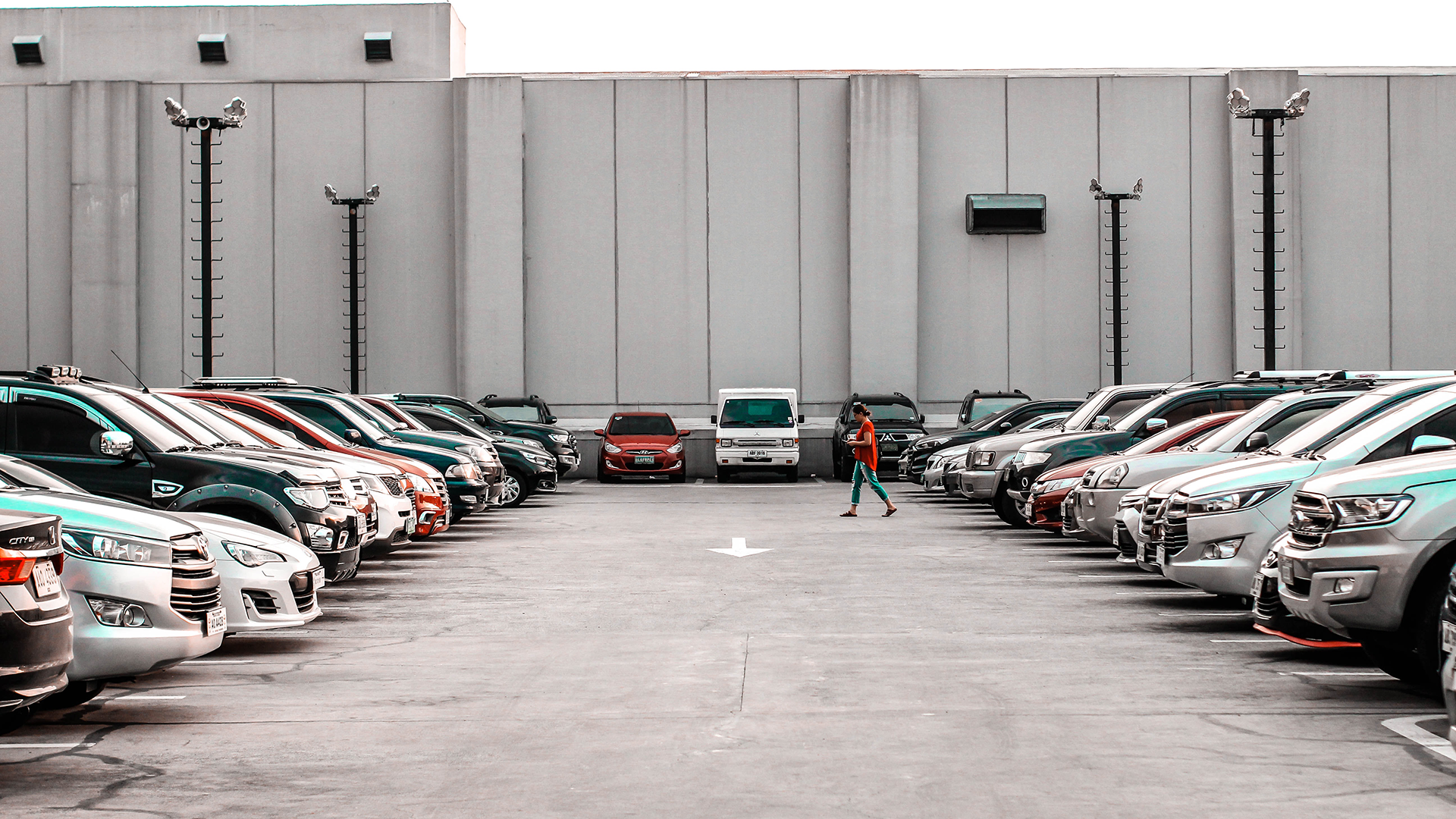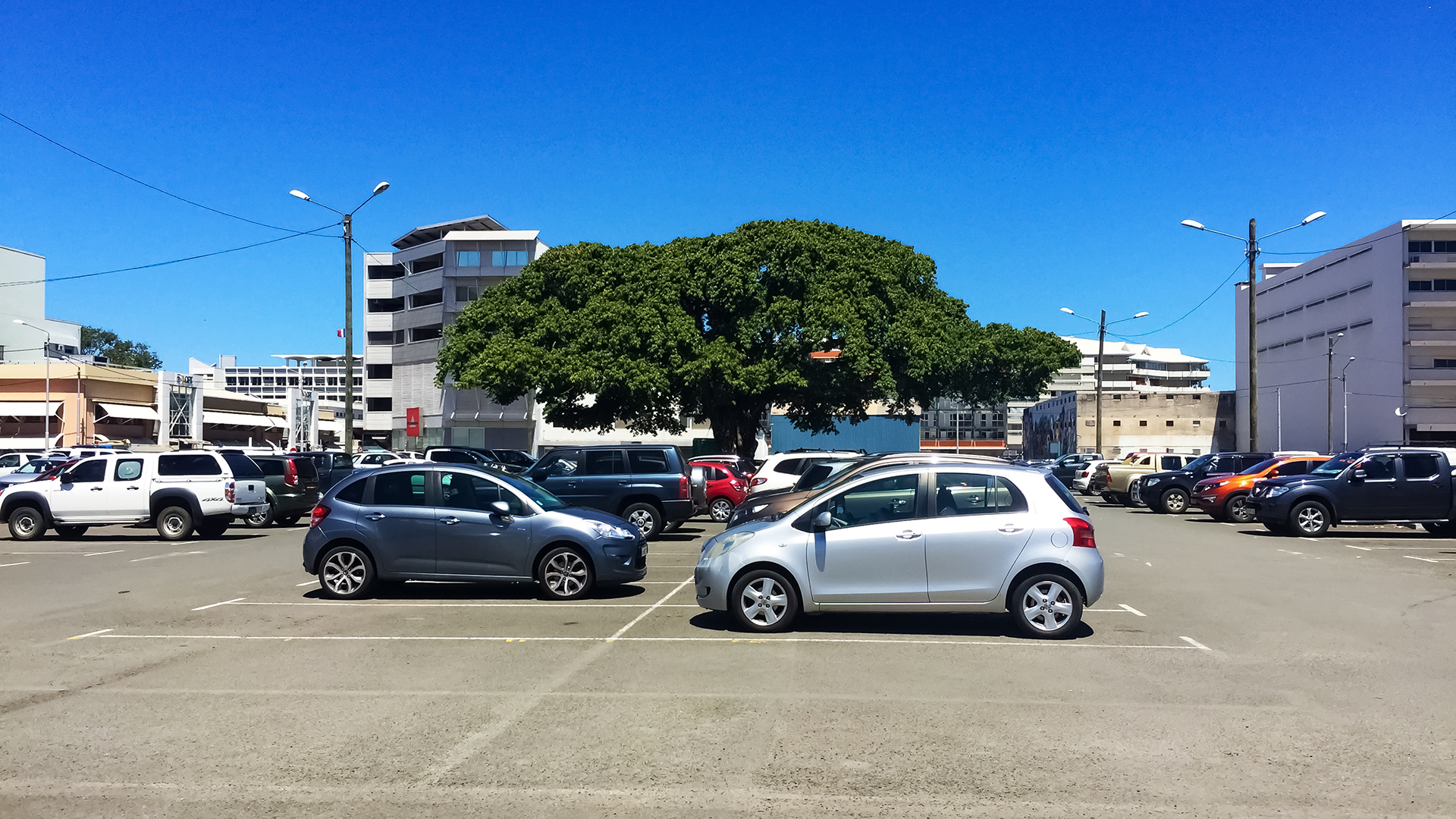June 6, 2022
A Look at Parking Policies in Transportation Development Reviews
The way we plan and build our transportation systems has a direct impact on our health, our climate, and the overall livability of our towns and cities. Over the past decade, our industry has increasingly recognized that many patterns of these transportation systems originate not on the roadway, but in the parking lot.

Over the past decade, our industry has increasingly recognized that many patterns of these transportation systems originate not on the roadway, but in the parking lot.
How jurisdictions manage parking has both direct and indirect effects on many goals:
- How much we chose to drive (sometimes called “Vehicle Miles Traveled” or VMT). Free and abundant parking is a strong predictor for how much people choose to drive.
- The quality of our active transportation system (walking, bicycling, and transit use). Competition for space for parked vehicles often means that bike lanes, sidewalks, and bus stops are compromised.
- How efficiently we use our land. Building parking lots instead of buildings reduces the value of the built environment, both in terms of needed housing, commercial, and industrial development and in how much value the property contributes to a municipality.
- The cost of housing. Particularly for multi-family housing, adding off-street parking to the cost of rent drives up costs.
- Retention and reuse of historic buildings. Ideally, older buildings are adapted to changing uses; modern parking requirements can make this impossible.
- How hot our cities will become. Surface parking lots contribute to the urban heat island effect, even when extensively landscaped.
- Water quality. Runoff from surface parking lots is typically contaminated with oils and must be treated either onsite or at a water treatment facility.
While the list at a glance is overwhelming, there’s a very practical place for communities to start addressing these concerns and mitigating the impacts of parking: the transportation development review process.

How jurisdictions manage parking has both direct and indirect effects on many goals. Some of these goals include: 1) The quality of our active transportation system and 2) How efficiently we use our land.
The Role of New Development on Car Dependency
While not always intentionally, development projects with parking lots encourage our dependency on driving. In fact, a study of parking for a building by District Department of Transpiration (DDOT) found the #1 thing that led to more car trips was more parking.
It’s a logical pattern: when new developments include an abundance of parking, they’re making it easier to get there by driving than by any other mode. Additionally, parking availability can push developers from dense urban areas into neighboring towns that have more space or more affordable land parcels, which encourages more driving.
Transportation Development Review: Start With Your End Goal in Mind
It’s important to note that developers are often not the driving force behind this cycle; they may be encouraged to provide parking in order to secure funding for their development. Rather, we encourage communities to think about the role of development review and parking policies in sustaining our culture of driving.
Transportation development review policies should always be crafted out of a jurisdiction’s vision for mobility, housing, and economic development. From there, we can develop mitigations that advance the vision (and avoid mitigations that are inconsistent with the vision). In other words, we must start with where we want to end. Where do we want people to live, work, and play that keeps them from having to drive so much? This is the vision from which we can craft policies.

When new developments include an abundance of parking, they're making it easier to get there by driving than by any other mode. Additionally, parking availability can push developers from dense urban areas into neighboring towns that have more space or more affordable land parcels, which encourages more driving.
Steps to Reduce Car Dependency Through Parking Policies
What does this mean for parking policies? As with any transportation challenge, it’s not about any singular metric; rather, it’s an understanding of the many tools we have in our toolbelts that can be built into the transportation development review process to mitigate issues. When it comes to parking policies, here are just a few:
- Plan for the future your municipality needs, rather than the future transportation models tell us we have to have. Current metrics often favor single occupancy vehicles, incentivizing mitigation that increases parking. Think about who and how many people benefit from the metrics that currently determine development mitigation outcomes.
- Start from the assumption that parking leads to vehicle trips and vehicle trips lead to impacts. Ask a developer to demonstrate why parking is necessary, rather than starting from the assumption that excessive parking should be included. Instead of designing for the busiest day of the year for parking, plan for the average day. Development can use transportation demand management strategies to manage the busiest day of the year.
- Account for walkability and density, and multimodal accessibility of the area when determining maximum parking ratios. Developments in areas close to a key bus route or trains, is walkable, and has high density should minimize the amount of parking built and create incentives to encourage use of sustainable modes.
- Make sure policies are responsive to the built environment and allow them to be flexible. As the built environment changes so should the policies guiding development.
- Work with brokers/banks/financial institutions to get them on the same page regarding parking requirements for new development. Most developers do not dream of building excessive parking. Often, they must guarantee a certain amount of parking to secure a tenant or a bank loan. Working with real estate brokers and banks active in your city can help reduce the pressure on developers to build more parking.
- Encourage mixed use development to capture more trips. Think about all the trips that employees, residents, and visitors make throughout the day. For large developments, having things like convenience stores, grocery stores, gyms, day care centers, dry cleaners, parcel delivery stations, or coffee shops in the same location means one less trip people will have to make.
- Have sustainable transportation access, like a transit line, bikeshare, or providing more frequent services by installing bus priority lanes and protected bike lanes.
- Create zoning that allows transit-oriented development and density to thrive. When region-wide policies are unrealistic, zoning can be a tool to target areas to emphasize mitigation that prioritizes transit, bicycle, and pedestrian comfort levels.
- Make public parking policies part of the equation. Encourage consolidation and shared parking, reduce or permit on-street parking, and charge the right fees. Consider eliminating parking minimums entirely.
- Unbundle residential parking for multi-family residential development to make the costs of parking salient to tenants. Unbundling parking is also an important strategy for reducing housing costs. It means that only the people who need parking will pay for it, and those who don’t need parking will not have to bear the extra cost.
Reach Out
We appreciate the opportunity to support our clients on developing policies that inform effective long-range planning. Many of us joined the world of consulting with experience in former city roles that make us empathetic to the challenges of these processes, while optimistic about the practical possibilities to create change. If our experience with transportation impact analysis policy guidelines would be of benefit to you, or if you simply want to further discuss the ideas in this article, please reach out to any one of us!
